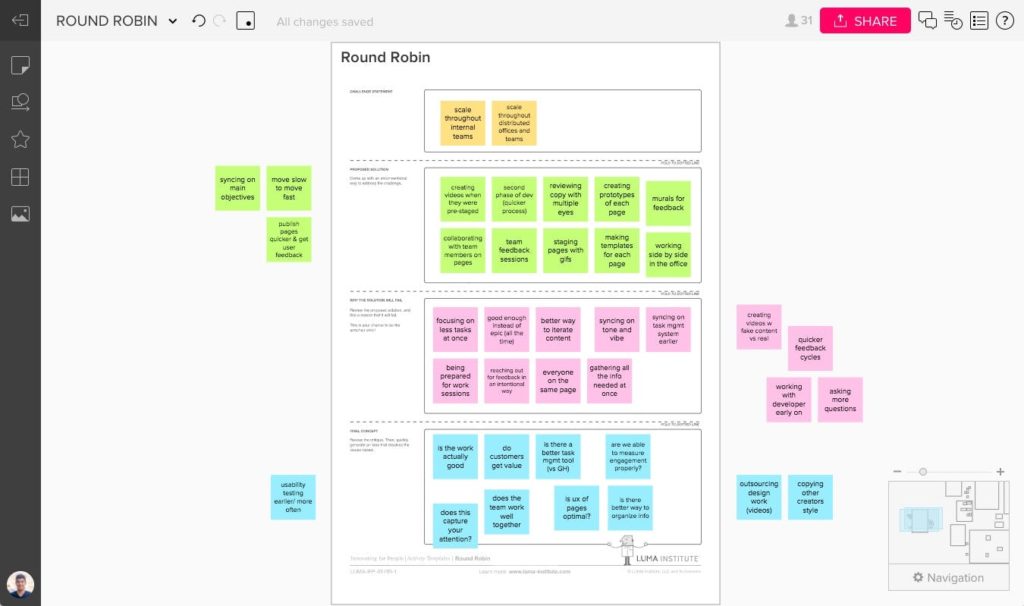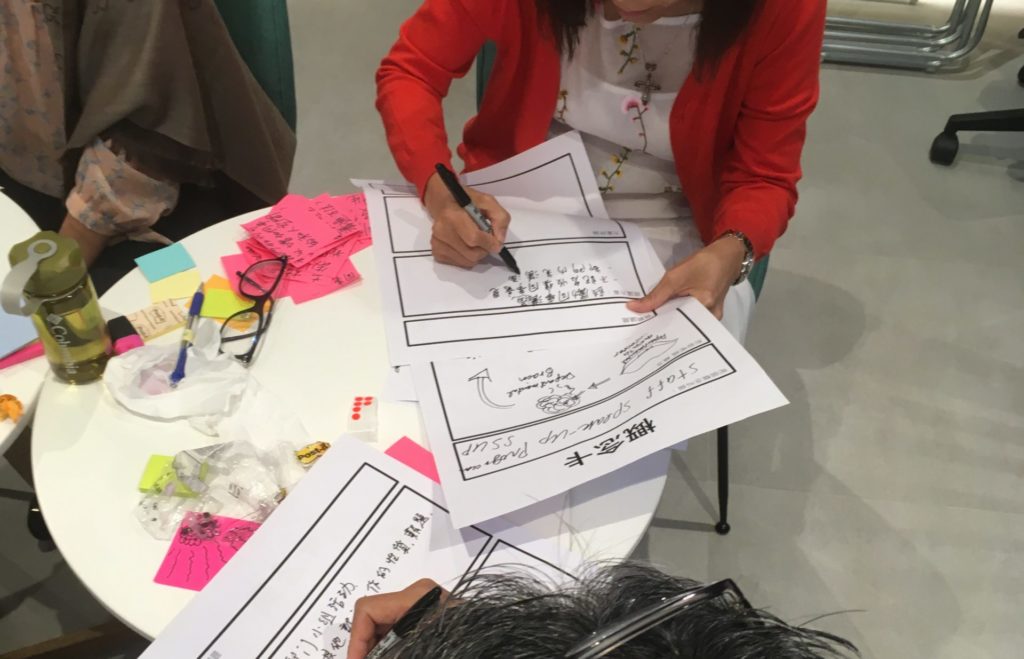Round robin is a tool used to refine and develop rough ideas into concepts as a team. It is best used in the later stages of the ideation stage of design. Round Robin lets design teams and stakeholders leave their egos at the door and encourages productive debate.
Who Should Use it?
This tool is flexible in application and can be used by groups of 4-5 of any of the below configurations
- Design teams
- Multifunctional teams
- Users, with design teams facilitating
- Clients, with design teams facilitating
The Run Down
Before using this tool, the designer or design team should create a Round Robin worksheet. This can be roughly hand drawn or beautifully design on the computer. I recommend quickly hand drawing the worksheet when using it within the team and creating a more refined version when using it with users and clients.

- Gather in a group of 4-5 people
- Everyone writes down the challenge statement in the uppermost box
- Everyone illustrates a solution for that problem in the second box (writing is OK but encourage sketching)
- Everyone passes their sheet to the person on their left
- Everyone comes up with a critique of the solution
- Everyone passes their sheet to the left again
- Everyone refines the proposed solution in a way that solves or addresses the critique
Why you should use it
Too much ownership:
For every design challenge, there are millions of possible solutions and no right answer. And yet, often, we feel attached to the solutions that we proposed for no other reason than that it was ours. We know there is no perfect concept but feel defensive when others critique our ideas.
- This method ensures that each concept has shared ownership between at least three people in the group
- It ensures that every idea is critiqued at least once
Silo’ed perspectives
Often, multidisciplinary teams have trouble establishing consensus because everyone approaches problems from different perspectives. The developers and engineers think about technical requirements, consultants and marketing people think about business goals, and UX designers think about users. It often seems like there is no middle ground
- This technique is a mechanism to build in multidisciplinary thinking from the very conception of an idea
- It shows that there is commonality between different disciplines
- It allows multidisciplinary teams to do what they do best – come together with diverse perspectives to create the best solution
“Don’t look at me” attitude
Sometimes, people don’t feel comfortable contributing ideas or criticisms in a team setting. But whether its because there’s workplace hierarchy at play or because they’re just shy, ideation works best when everyone gets involved.
- This technique forces everyone to come up with at least one idea and one critique and one refined solution
- If there is potential awkwardness in criticising each other’s work because of hierarchy, this tool levels the playing field because everyone’s idea has to be critiqued
Potential Pitfalls
Participants are taking too long. Always strictly time box this activity. As with other ideation activities, having a time limitation actually boosts creativity and it’ll allow the activity to be over in 15-30 minutes instead of half a day.
Participants are not writing anything down. Create a safe and no-judgement environment. Play some ice-breaker games to lower the stakes of sketching, ideating, and coming up with crazy ideas. If all else fails, build in a sharing component to the activity. If people know they have to stand up and share their ideas, they’re more likely to write something down.
Participants don’t know what to do. Always have a facilitator who does know what to do and what the next steps are. Be prepared to give feedback and always be encouraging.
Sources
https://designsprintkit.withgoogle.com/methodology/phase1-understand/round-robin
https://www.mindtools.com/pages/article/round-robin-brainstorming.htm
https://mural.co/framework/round-robin
https://www.boardofinnovation.com/staff_picks/our-favorite-ideation-tools/
